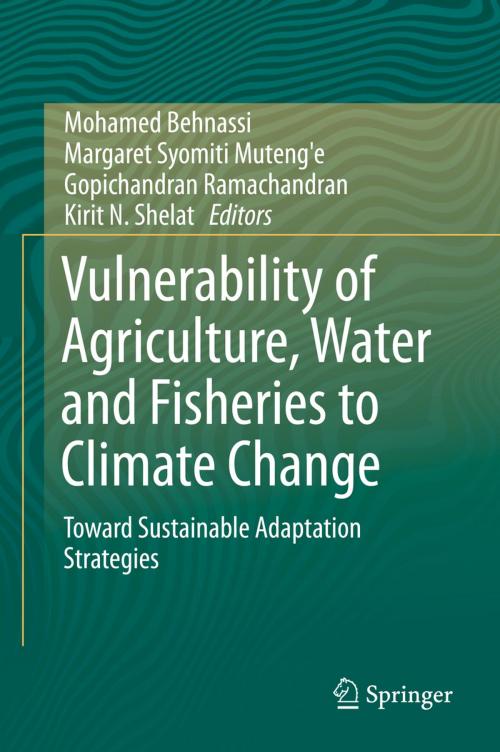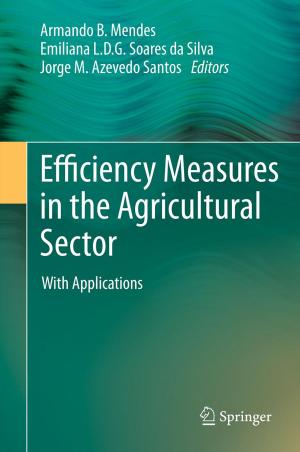Vulnerability of Agriculture, Water and Fisheries to Climate Change
Toward Sustainable Adaptation Strategies
Nonfiction, Science & Nature, Science, Biological Sciences, Environmental Science, Business & Finance, Industries & Professions, Industries, Nature| Author: | ISBN: | 9789401789622 | |
| Publisher: | Springer Netherlands | Publication: | July 15, 2014 |
| Imprint: | Springer | Language: | English |
| Author: | |
| ISBN: | 9789401789622 |
| Publisher: | Springer Netherlands |
| Publication: | July 15, 2014 |
| Imprint: | Springer |
| Language: | English |
Human activity is changing the global environment at an unprecedented rate while humanity faces a range of complex and interrelated challenges to local, regional and global development, human security and politics. Food security ranks high on the science, policy and development agendas. However, most research linking global change and food systems examines the impact of climate change on agricultural production, or the impact of agriculture on land use, pollution and biodiversity, overlooking interactions with other aspects of the food system – such as food processing, packaging, transportation and consumption and employment derived from these activities.
This book demonstrates that new threats to food security which arise from environmental change require more than simply a focus on agricultural practices – what is needed is an integrated food system approach. The authors point out that the process of adapting food systems to global environmental change is not simply a search for technological solutions to increase agricultural yields. Tradeoffs across multiple scales among food system outcomes are a prevalent feature of globalized food systems. Within food systems, there are key underexplored areas that are both sensitive to environmental change and crucial to understanding its implications for food security and adaptation strategies.
The authors assert that technical prescriptions alone will not efficiently manage the food security challenge. This book is their contribution to a new paradigm, which addresses food systems holistically by engaging researchers in multiple disciplines to understand the causes and drivers of vulnerability.
Human activity is changing the global environment at an unprecedented rate while humanity faces a range of complex and interrelated challenges to local, regional and global development, human security and politics. Food security ranks high on the science, policy and development agendas. However, most research linking global change and food systems examines the impact of climate change on agricultural production, or the impact of agriculture on land use, pollution and biodiversity, overlooking interactions with other aspects of the food system – such as food processing, packaging, transportation and consumption and employment derived from these activities.
This book demonstrates that new threats to food security which arise from environmental change require more than simply a focus on agricultural practices – what is needed is an integrated food system approach. The authors point out that the process of adapting food systems to global environmental change is not simply a search for technological solutions to increase agricultural yields. Tradeoffs across multiple scales among food system outcomes are a prevalent feature of globalized food systems. Within food systems, there are key underexplored areas that are both sensitive to environmental change and crucial to understanding its implications for food security and adaptation strategies.
The authors assert that technical prescriptions alone will not efficiently manage the food security challenge. This book is their contribution to a new paradigm, which addresses food systems holistically by engaging researchers in multiple disciplines to understand the causes and drivers of vulnerability.















